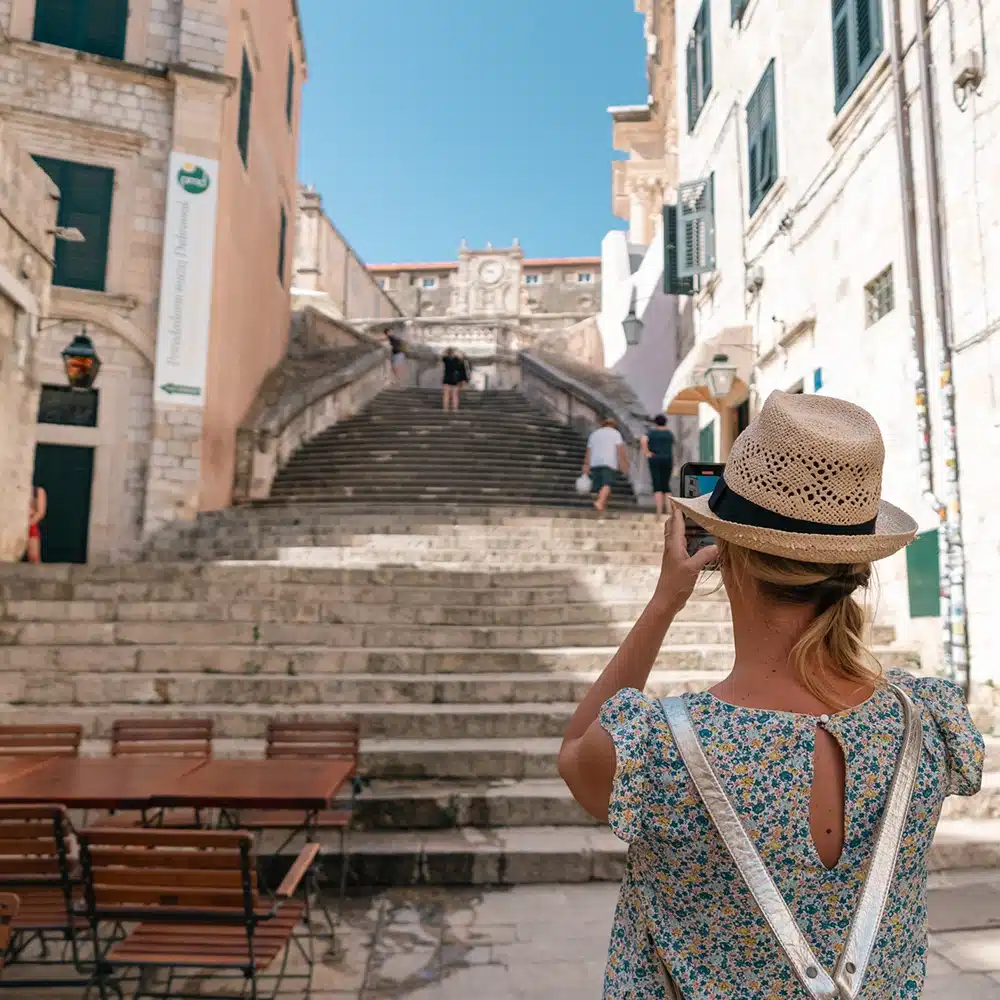When you think of the Adriatic powerhouses of the Middle Ages, Venice probably comes to mind. But the famously canal-lined capital of Italy’s Veneto region wasn’t alone in ruling the waves of the Eastern Mediterranean. The Venetian Republic had a formidable rival: the Ragusa Republic, today’s splendid UNESCO World Heritage Site of Dubrovnik. PONANT is proud to show you its riches.
“If you want to see heaven on earth, come to Dubrovnik,” wrote Irish playwright George Bernard Shaw in 1929. His assessment still holds 100 years later, as much of the city was restored to its former glory and beauty after the Croatian War of Independence in the early 1990s brought damage to its buildings.
Approaching by ship, the city’s mosaic of terracotta rooftops peeks out over a blue-sea horizon. Then the stone walls appear, rising directly from the surf, some of them 80 feet high and 20 feet thick. As its shore takes form, you can see that it reaches into the sea in the shape of a scallop.
Heaven on earth? Most certainly. PONANT takes you to this medieval gem frozen in time on a luxury small-ship voyage in the Mediterranean.
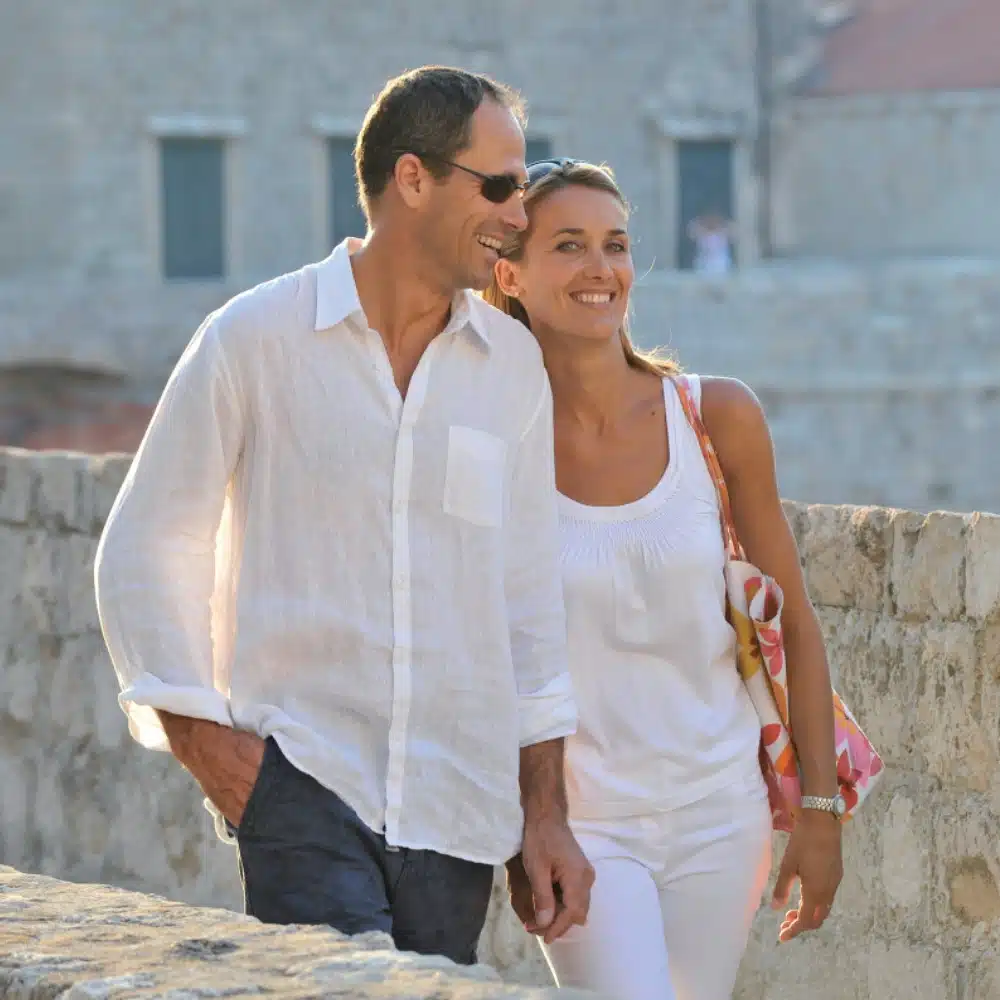
The Rise and Fall of Ragusa
We’ll get back to all there is to discover in a moment. But first, let’s look briefly at Dubrovnik’s underappreciated past as the Republic of Ragusa.
At its founding in the seventh century, Ragusa was ruled by the Byzantine Empire, the world’s most powerful economic, cultural, and military force. After the Crusades sacked Constantinople (then the seat of Byzantium), control of Ragusa shifted to Venice, in 1205. Ragusa gained its sovereignty with the Treaty of Zadar (1358), which dictated that the Venetian Republic cede the land to the Kingdom of Hungary. For their part, Hungary allowed Ragusa to function on its own. Ragusa’s independence would last some 450 years until the early 1800s.
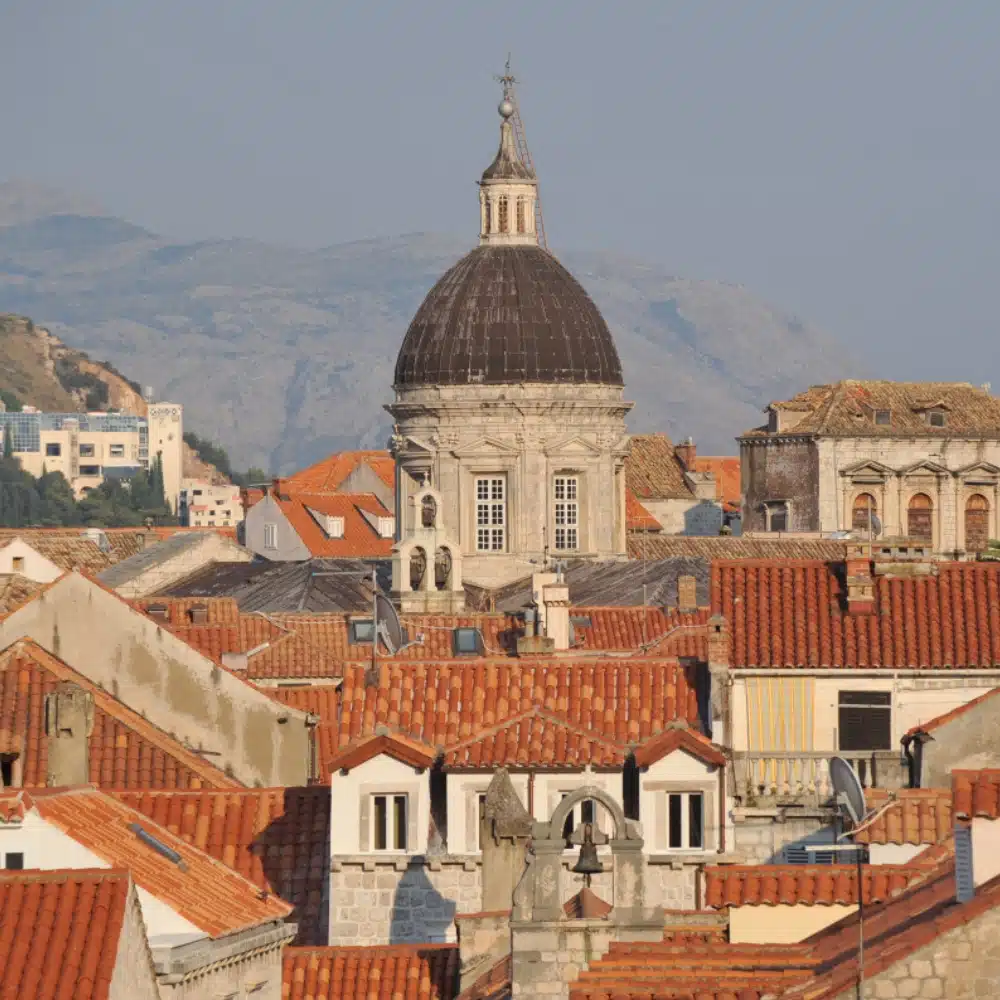
By the 15th century, Ragusa’s maritime presence equaled that of Venice in the Adriatic and it had formed an alliance with Ancona, which was directly across the sea on Italy’s shores. The two worked together to prevent Venice from turning the Adriatic into “Venetian Bay” – a massive finger-shaped sea controlled only by the Doge of Venice. After the Ottomans overtook the Byzantine Empire, in 1453, Ragusa found itself equidistant from the center of two potentially aggressive European superpowers. It quickly mastered the art of diplomacy between Ottoman and Venetian interests. For instance, as a subordinate state of the Ottoman Empire, Ragusa paid “tributes” to the Ottomans; in return, the Ottomans provided them diplomatic support in their relationship with Venice.
This kind of diplomacy was just part of what allowed the republic to thrive. In addition, it was among the first to establish modern laws and institutions, the most forward-thinking of its day. Medical services were opened in 1301. One of the first pharmacies in the world started prescribing cures in 1317; it still operates today. An almshouse started giving shelter to the needy in 1347 and a quarantine hospital started caring for the sick in 1377. With other advances such as prohibition of slave trading (1418), the founding of an orphanage (1432), and a 12-mile aqueduct (1438), the Ragusan Republic was shaping its own future – and, by example, that of other republics to come.
After the fall of Napoleon – whose marches and warfare had embroiled Europe in turmoil for some 23 years – the Congress of Vienna of 1815 redrew the continent’s boundaries, dissolved the Ragusa Republic, and absorbed it into the Austrian Empire. One hundred years later, World War I and an economic crisis split that empire apart, and Dubrovnik became part of the Kingdom of Yugoslavia. In 1991, the Republic of Croatia declared its sovereignty, but not without a fight. More than half of Dubrovnik’s buildings were damaged during a bombing campaign by the Yugoslav People’s Army.
Since then, the city has been gloriously restored.
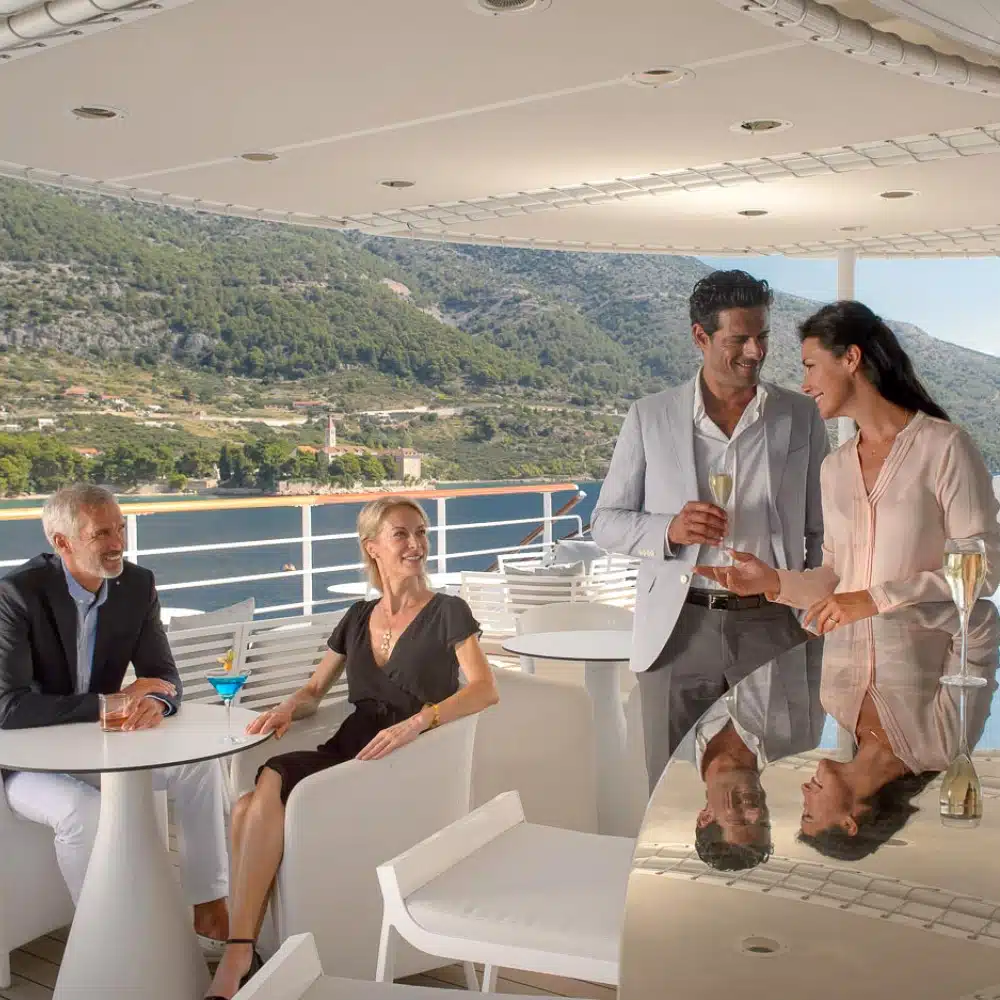
Untold Treasures Line These Old City’s Streets
Today, Dubrovnik is cited by UNESCO as a work of “human creative genius.” Within its imposing walls – which run 1.2 miles around the late-medieval city – a treasure trove of Gothic, Renaissance, and Baroque churches, monasteries, palaces, and fountains stand testament to one of Europe’s most resilient and historically innovative cities. A stroll around the ramparts gives you a breathtaking birds-eye view over the terracotta rooftops.
But you’ll want to get a closer look at the city’s masterpieces, and to mingle among the residents in the market squares. The 1444 Gothic bell tower still stands as a symbol of the free state of Ragusa. The Gothic Rector’s Palace, too, carries echoes of the republic; it served as the Town Hall for centuries. Today, it houses the history department of the Museum of Dubrovnik. Similarly, the Renaissance Sponza Palace is home to the State Archive, whose oldest document of the more than 100,000 in its holdings dates to 1022.
Among the Old City’s remarkably preserved religious sites, the Franciscan Church and Monastery boasts a library with 20,000 books, priceless old manuscripts, and delicate incunables – the first documents in history printed in moveable type. Its pharmacy dates to 1317 and is the oldest of its kind in Europe still functioning, while the friary cloister is adorned with graceful arches and 12 columns. Next door, the small and simple Renaissance St. Saviour Church survives from the 16th century. A bit more extravagant, St. Blaise’s Church was dedicated to the patron saint of the city and protector of the former republic. It is truly a confection decorated in a rich Baroque style with angels, saints, and stunning floral motifs carved from marble.

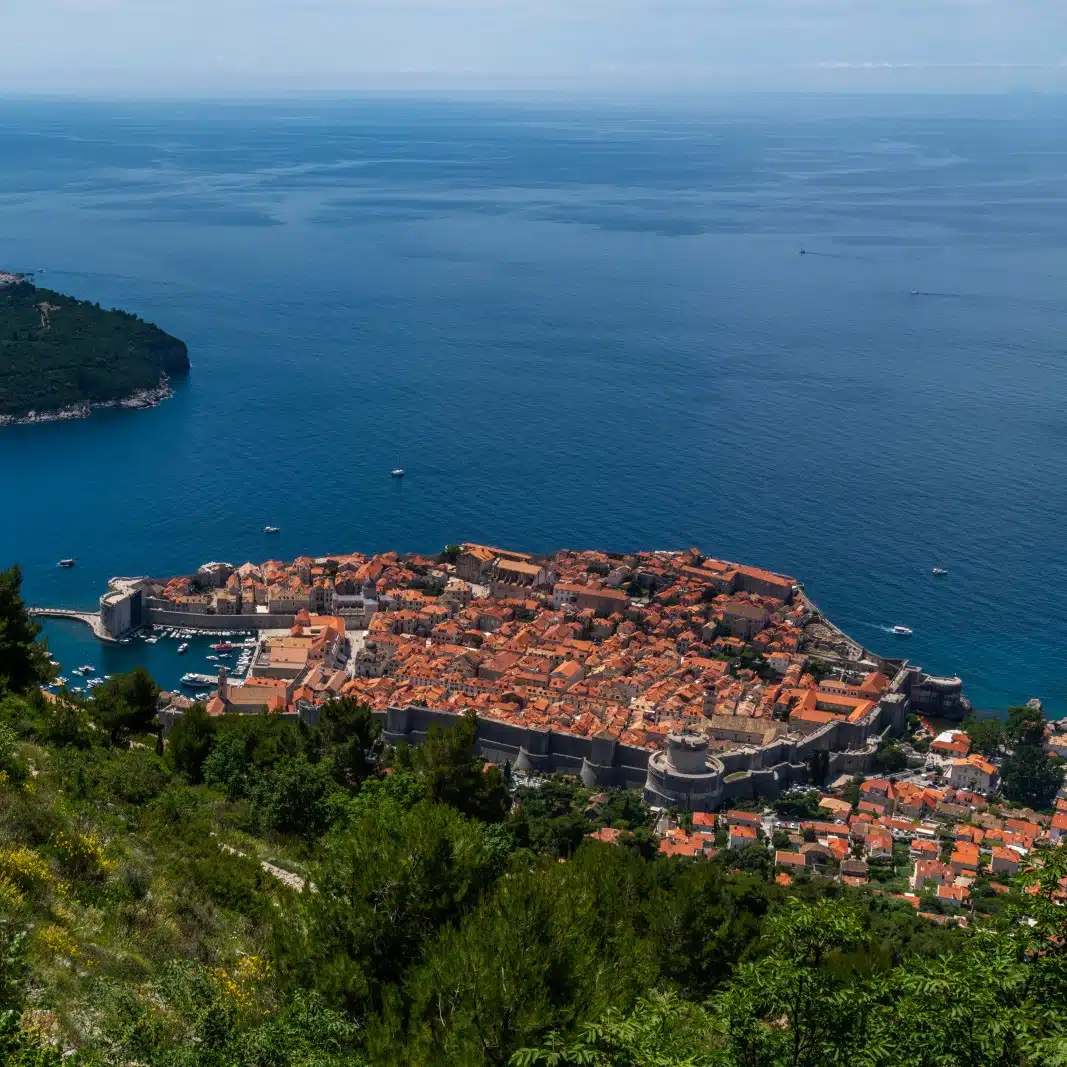
Join us in Dubrovnik
PONANT provides so many ways for you to uncover the incredible secrets of Dubrovnik. Click below to learn more about our exclusive itineraries on board our luxurious, intimate small ships – designed for in-depth exploration.




